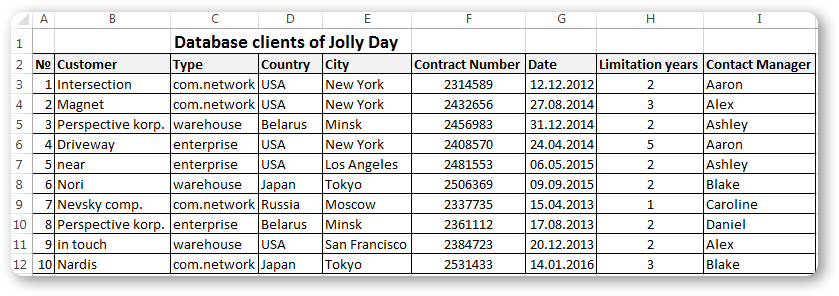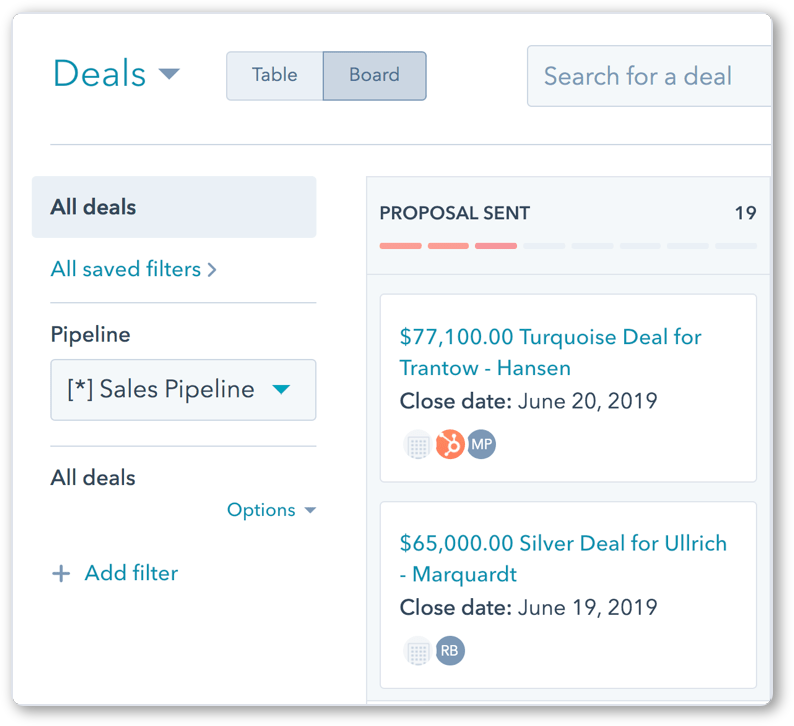Customer database
One of the essential components of customer data management systems is an on-target customer database. Here is what you should know about a customer database to manage your client data successfully.
What is a customer database?
A customer database is a collection of information about customers that includes their names, contact details, demographics or firmographics, profession-related characteristics, buying behavior, kept in one place.
| Things to know – Contact details include the customer’s email address, phone number, and social profiles. – Demographic characteristics refer to age, gender, marital status, and household composition. – Profession-related characteristics are job position and mutual contacts. – Buying behavior means the customer’s shopping preferences, past purchases, the average sum of bills or invoices, and previous cancellations. – Firmographics (for B2B clients) relates to a company’s industry, number of employees, ownership, etc. |
How complete your customer database is depends on your goals, the type of data you collect, the leads you have, and how your company is going to use this information. Descriptive fields for unqualified leads and loyal customers may differ significantly, right?
While the first ones can consist of only name, email, phone number, and gender, the second ones can include more substantial information. Say, the address, information about kids/spouses/parents (if any), previously ordered goods, or the responsible account manager’s contacts.
What is a customer database used for?
Customer databases have many uses. On a strategic level, they can be used to create buyer personas, key account profiles, customer journey maps, and sales funnels. This way, the company gets a 360-degree view of:
- What drives customers’ choices?
- What are the key factors that influence decision-making?
- What reasoning pays off the most?
- What can distract customers from closing the deal? etc.
However, a client database is not only a high-grade information source. It’s a handy tool for employees who directly interact with leads or act on their behalf, for example, sales representatives or trustees who provide turnkey solutions. They can use it to:
- Accelerate their sales pipelines
- Provide leads with appropriate offers
- Personalize messages, emails, and shopping rewards
- Respond to inquiries quicker
- Provide clients with more helpful support, etc.
If customer data is structured and coordinated proficiently, the company will benefit from more comprehensive selling decisions, and the pre-selling groundwork will be completed way faster.
How to create a customer database?
It’s up to you to decide on the contents but to make your life a bit easier, we’ve collected a few recommendations about getting and formatting the data:
1. Plan for the future
As your business grows, the number of customers will increase accordingly. So, even when starting with a single worksheet or SQL table, one must think of ways to manage data flow in the future. It’s better to stick to common data storage principles from the very beginning:
- Use neat tables — avoid merged cells or too many macros
- Distinguish static data, the one entered only once, from business process-related data, such as the number of orders, totals, etc.
- Enumerate information
- Use correct formatting for numerals: percentage, currency, accounting, number, or scientific
- Add attributes to existing entities, and others.
Not to reinvent the wheel, look for some pre-designed tables, say, an Excel customer database template by ExcelTable. You can download ready-to-use examples and format them as you like.

2. Don’t overload the database with irrelevant information
The less is more when it comes to daily data usage. Excessive datasets have many disadvantages:
- They cost more (high server load, more expenses to maintain accuracy, etc.)
- They complicate the search process
- They cause scattered attention and make it difficult to see essential details.
To avoid these inconveniences, don’t start with adding all the information you can collect. Instead, consult with those who are going to work with the user database and ask them what data they need.
3. Foresee or launch the autocomplete of data fields
This is an important step, especially if you plan to use multiple data sets or third-party software, like CRMs, marketing & email automation tools, etc. In this case, copying and pasting tables manually from one place to another isn’t an option. Consider APIs or hire programmers to write a code to automatically merge or transfer data.
4. Write the policy for interacting with the database
What you develop will most likely be viewed and utilized by several users. So it’s a good idea to create a README file or list of “how-to” rules in some corporate wiki space, say, Confluence. Pay attention to:
- Description of column and row names
- Version control procedure: rights, systems, change approvals
- Connected or related documents
- Security issues: access restrictions and sharing rights.
5. Appoint the owner and editors
A customer database is not something remaining unchanged once and for all. There should be a clear distribution of roles:
- Who is the file holder
- What employees or job roles are approved to make edits
- Who can “view only.”
These may be needed to resolve issues with maintenance or permissions.
Customer database software
If truth be told, manual data management, e.g., Excel tables only, is rarely reasonable. Specialized software has undeniable strong points:
- Built-in widgets, templates, formulas, and common indicators
- Vast opportunities to incorporate all sorts of data
- Dashboards, diagrams, standardized reports
- Affordable licenses.
Not to mention that such tools perform thousands of operations in a second, always stick to the algorithm, work 24/7, and are free from bias or conflict of interest. Below is the list of the best software to manage customer information — as of 2022:
- Snov.io (with its integrations)
- HubSpot
- Zendesk
- Freshworks
- Pipedrive
- Salesforce
- Apptivo.
These tools fit both marketing and sales purposes and can be integrated with CRMs, Google Suite, social media, email finders, CMS, and others. Of course, annual or enterprise-wide subscriptions may cost a pretty penny, especially for private entrepreneurs or new coming start-ups. But don’t let a price deprive you of automation benefits.
If you have a moderate budget — check out the following options of how to get free customer database software for small business:
- Free online customer database by Bitrix24
- Customer database with up to 100,000 records by Zoho CRM
- Free subscription option with 5 documents per user monthly by the HubSpot CRM
- Extension for Gmail to manage contacts from the inbox by Streak CRM
- Free plan with unlimited users & contacts by Freshworks CRM.

Before starting with any software, make sure you’ve modeled an architecture for the future database. Also think of how exactly you can collect the necessary data, and how much it will cost your company. Remember: with a well-made customer database, your business will build loyalty and earn higher profits.
















